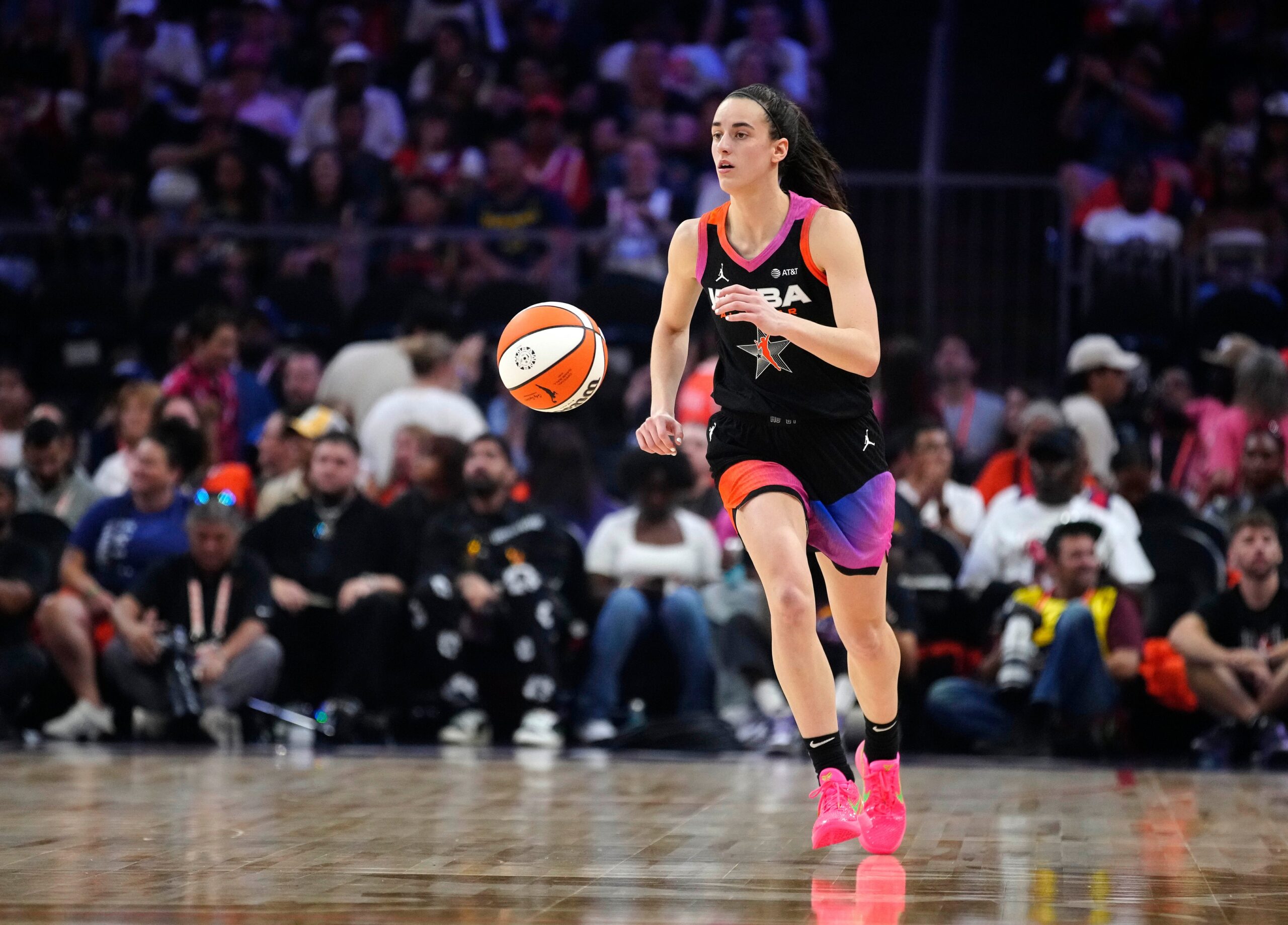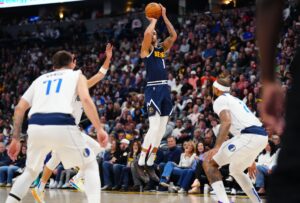After Team USA’s women’s national team defeated France in the Paris Olympics to earn their eighth straight gold medal, there were a few individuals who were singled out.
Answering The Caitlin Clark, Team USA, Olympics Question
Team France forward Gabby Williams, a former top-five pick in the WNBA Draft, was one. Williams played so well that Angel Reese –the new face of the franchise that drafted Williams –invited her back to the Chicago Sky. It’s unclear whether Reese actually has enough cachet to make such a move possible. Nonetheless, it’s a clear sign of respect.
ok now that the game is over, would you like to be apart of the chicago sky again???@gabbywilliams15 😭🤔 (thought it wouldn’t hurt to try lmaoo)
— Angel Reese (@Reese10Angel) August 11, 2024
On the USA Basketball side, stars A’ja Wilson, Chelsea Gray, and Diana Taurasi were being singled out. Wilson, well on her way to becoming a three-time WNBA MVP, made waves for her play and personality. Gray and Taurasi were called out for uninspiring performances, the former’s physical conditioning coming into question. This then led to further criticisms of USA Basketball head coach Cheryl Reeve and USA Basketball director Briana Weiss. Reeves found herself under fire for her gameplan and rotations.
Both women were questioned for their decision to leave Indiana Fever fan favorite Caitlin Clark off of the roster.
Clark, the woman who has been both a gift and a curse to the WNBA simply by playing basketball. Clark, who leads the WNBA in assists per game (8.2) as a rookie. A player who WNBA legends and media have constantly disparaged. Sheryl Swoopes, arguably the greatest WNBA player of all-time, is a leader of the anti-Clark pack. Yet, her criticisms of Clark don’t seem to be based on her wealth of basketball knowledge.
Swoopes –like Breanna Stewart and others –just seems to be more bothered by her popularity than anything else.
Fair or Foul?
When Clark was originally left off the roster, the claim was that Weiss was trying to put together an experienced roster. That’s fine in and of itself. Yet, when considering the records that Clark broke in college and WNBA, it’s obvious why she should have been in consideration. When looking at the way that Gray, nearly 32 years old moved around in Paris, it’s even more clear. If also focusing on Team USA’s issues with perimeter defense, their over-reliance on Gray, and their 3-point struggles, it’s plain as day.
With that being said, when the ever-popular Dawn Staley admitted that the selection committee would’ve had Clark in high consideration to make the roster if they were to re-do their decision, it made perfect sense.
“As a committee member, you’re charged with putting together the best team,” Staley says, per Chris Landers of NBC Olympics. “Caitlin is just a rookie in the WNBA. She wasn’t playing bad, but she wasn’t playing like she’s playing now. If we had to do it all over again, the way she’s playing, she’d be in really high consideration of making the team because she is playing head and shoulders above a lot of people.”
As Staley noted, and as should have been expected, Clark’s improved steadily throughout the season. In the beginning, the physicality of WNBA defenders –fair or foul– seemed to get the best of her. Her shot wasn’t falling consistently and she was making rectifiable mistakes as a facilitator. Fast forward past her first seven games and she’s shined since, averaging 17.7 points and 8.9 assists per game on 33.1 percent shooting from 3.
She had her best month in July, averaging 20.3 points and 12.5 assists per game on 43.2 percent shooting from the field ahead of her first All-Star Game. Perhaps most importantly, she had a 2.3:1 assist-to-turnover ratio. Clark was an on-time and on-target passer. She was handling the physicality better. Furthermore, she remained a constant defensive threat, racking up steals with her IQ, length, and quick hands.
Who Should She Have Replaced?
Looking at Team USA’s roster, she may have very well been more useful than Taurasi, who averaged 1.0 point and 1.2 assists in 11.2 minutes per game (all team-lows). Jewell Loyd was little better, averaging 3.2 points and 1.6 assists in 11.3 minutes per game. Both women shot below 25 percent from the field and 30 percent from 3. Gray, as previously mentioned, and Alyssa Thomas underwhelmed as well.
From a chemistry standpoint, Gray would’ve been hard to keep off the team; three of her teammates in the Paris Olympics were her WNBA teammates. She was also part of Team USA’s gold medal team in Tokyo. From a legacy standpoint, Taurasi and Loyd were all but locks. Taurasi was looking to win a historic sixth Olympic gold medal and Loyd has played for Team USA’s senior team since 2018.
That leaves the 32-year-old Thomas, a five-time All-Star who made her Olympic debut in Paris. A hooper whose multifaceted impact would have easily been replicated by Clark.
If picked over Thomas, Clark could’ve come in to spell Gray, injecting youth and energy into the lineup. On the wing, the rotation of Jackie Young, Kelsey Plum, Sabrina Ionescu, and Kahleah Copper would’ve continued to thrive. The Wilson and Stewart-led frontcourt might’ve found it even easier to dominate with another floor general helping them generate clean looks.
Looking Ahead to LA
While Clark was left off the Paris Olympics roster, she’ll have plenty of opportunities with Team USA in the future.
For one, she’s likely only going to get better, which would put her on an MVP trajectory. In addition, the old guard –Taurasi, Loyd, Gray, and Thomas –will all be at least 34 years old in the 2o28 L.A. Olympics. As sports fans know all too well, the toxic conversations surrounding Clark are unlikely to slow down any time soon. However, if the USA Basketball selection committee is truly making merit-based decisions, that shouldn’t affect her case.
Not again, anyways.






